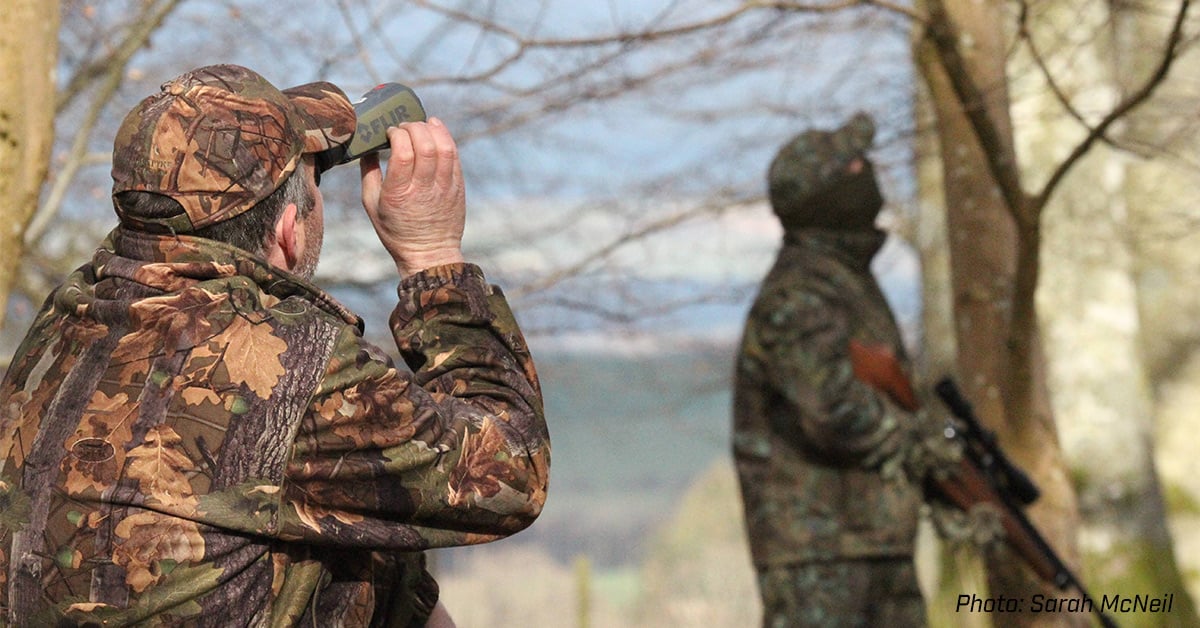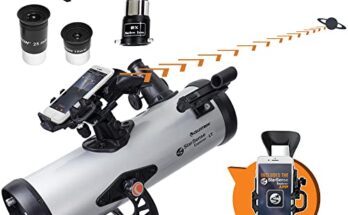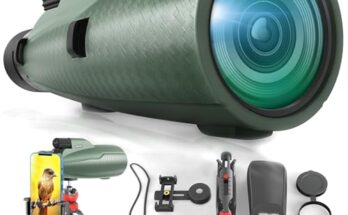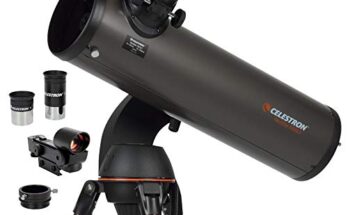Thermal imaging technology is highly effective for hunting. It allows hunters to detect game efficiently through heat signatures.
Thermal imaging has revolutionized nocturnal hunting by providing clear visibility of warm-bodied animals regardless of the environmental conditions. This technology is invaluable for hunters seeking to track game during the night or in dense foliage where traditional sight is impaired.
It helps to ensure higher success rates by revealing the location and movement of potential targets in real-time. By cutting through fog, brush, and darkness, thermal imaging devices offer a significant advantage for both safety and hunting success. The integration of thermal vision into hunting gear has undoubtedly improved the precision and experience of hunters worldwide, making it an essential tool in the modern hunter’s arsenal.
The Allure Of Thermal Imaging In Hunting
The allure of thermal imaging in hunting has revolutionized the way hunters approach their game. With its cutting-edge technology, finding and tracking animals has become more efficient than ever. Let’s dive into how thermal imaging is changing the game for hunters around the world.
Boost In Nighttime Pursuits
Thermal imaging brings a significant advantage to nocturnal hunting. Unlike traditional night vision, thermal scopes detect heat signatures, making wildlife visible in complete darkness. Here are ways that thermal imaging boosts nighttime pursuits:
- Easy detection of warm-blooded animals against cooler backgrounds.
- Increased safety by revealing hidden dangers in the dark.
- Enhanced tracking ability post-shot to ensure a successful harvest.
Spotting Game Through Obstructions
One of the most remarkable features of thermal imaging is its ability to spot game through visual obstructions. Dense foliage or camouflage do not mask the heat signatures that animals emit. Here’s how thermal optics make all the difference:
- See through light brush and foliage where traditional optics fail.
- Discern subtle movements of game in cluttered environments.
- Identify animals that are partially hidden or bedded down.
Technical Insights Into Thermal Imaging
Whether stalking prey in the still of night or safeguarding property, hunters and outdoor enthusiasts often ask: Is thermal imaging good for hunting? Let’s delve into the technical insights of thermal imaging to unearth its capabilities for the outdoorsman.
How Thermal Cameras Work
Thermal cameras detect heat emitted by all objects. They convert this heat into images. These images show temperature differences. Even in complete darkness, thermal cameras reveal hidden game.
- Infrared energy: Everything emits this. Thermal cameras capture it.
- Sensors: They convert infrared energy into electronic signals.
- Signal processing: The camera transforms signals into visuals.
- Display: It shows warm objects in detail, day or night.
With no light needed, thermal imaging ensures efficient, round-the-clock observation.
Differences Between Thermal And Night Vision
| Thermal Imaging | Night Vision |
|---|---|
| Detects heat signatures | Amplifies light |
| Works in total darkness | Needs ambient light |
| Displays heat patterns as images | Renders green-tone images |
| Can see through smoke, dust, and fog | Visibility reduced by obstructions |
Thermal imaging cameras and night vision devices differ fundamentally. Thermal gadgets see heat, not reliance on light like night vision. Thus, thermal imaging offers distinct advantages under any condition, making it exceptionally suited for hunting in diverse environments.
Benefits On The Hunt
Thermal imaging transforms the hunting experience. Hunters gain remarkable advantages when equipped with this technology. It makes the pursuit more effective and secure. Let’s explore how.
Enhanced Detection Of Animals
- See through obstacles: Thermal cameras see heat signatures, making foliage less of a visual barrier.
- Identify game at great distances: Spot animals beyond the range of standard night vision tools.
- 24/7 tracking: Day or night, thermal imaging provides clear insights into animal locations.
These features give hunters a significant edge. They can track movements without startling game.
Safety Improvements For Hunters
| Feature | Benefit |
|---|---|
| Nighttime visibility: | No need for artificial light, reducing risk and staying stealthy. |
| Clear weather conditions: | Thermal optics work in fog, rain, or snow where traditional optics fail. |
| Detect Other Hunters: | Avoid accidents by being aware of fellow hunters nearby. |
Overall, thermal imaging fosters a safer hunting environment. This is vital for every person in the wild.

Credit: www.flir.com
Controversies And Fair Chase Ethics
The debate over the use of thermal imaging in hunting taps into deep ethical questions. Hunters, conservationists, and wildlife enthusiasts weigh in on what constitutes fair pursuit. Let’s explore the ongoing controversy and the varying standpoints on integrating high-tech tools into age-old hunting traditions.
Balancing Technology With Tradition
Modern hunters have a plethora of advanced gadgets at their disposal. Thermal imaging is a popular yet divisive example. Opponents argue that it disrupts the ethical balance. They believe in the purity of the primal hunt. Supporters contest that such technology is simply an evolution of hunting tactics. They underscore its benefits for safety and species management. Both sides present compelling cases, leaving the hunting community to navigate these murky ethical waters.
Regulatory Perspectives On Thermal Imaging
- Legal Variations: Legal restrictions on thermal imaging for hunting differ widely. They can change from one region to another.
- Sport Hunting Norms: Some areas categorize thermal imaging as unsporting. They associate it with an unfair advantage.
- Conservation Efforts: On the flip side, wildlife managers sometimes endorse such tools. They find them useful for controlling overpopulations or invasive species.
Regulatory bodies continue to deliberate. They aim to ensure that ethical hunting practices prevail while adapting to technological advancements.
Optimizing Thermal Imaging Use
Optimizing Thermal Imaging Use is key for hunters who want to enhance their game. With the right tools and knowledge, hunters can leverage this advanced technology. This ensures better tracking and pinpointing the game, even in the darkest conditions.
Selecting The Right Equipment
Your success with thermal imaging starts with choosing the right equipment. Consider the following factors:
- Detection Range: A longer range means spotting animals from farther away.
- Resolution: Higher resolution offers clearer images.
- Lens System: Quality lenses improve image detail and tracking.
- Battery Life: Longer battery life keeps your gear going all night.
| Feature | Benefit |
|---|---|
| Color Palettes | Differentiates heat signatures more distinctly. |
| Refresh Rate | Reduces image lag for moving game. |
Best Practices For Responsible Use
Using thermal imaging in hunting comes with responsibility. Follow these best practices:
- Always respect wildlife and local hunting laws.
- Use thermal imaging as a tool, not a crutch. Hone traditional skills alongside technology.
- Practice good sportsmanship. Ethical hunting is paramount.
- Maintain and calibrate your equipment regularly.
Remember, thermal imaging should enhance, not replace, your senses and skills in the great outdoors.

Credit: www.amazon.com
Future Of Hunting With Thermal Imaging
The future of hunting with thermal imaging paints an intriguing picture. This powerful technology allows hunters to see thermal signatures of animals, day or night. It’s not just about the advantage it provides in visibility, but also its potential to revolutionize hunting practices. As we venture further into this topic, let’s explore what these technological advancements mean for the hunting arena and how they could aid in wildlife conservation efforts.
Technological Advancements
The realm of hunting is undergoing a transformation thanks to thermal imaging technology. Here are key advancements:
- Higher resolution cameras for crisper images
- Improved sensor sensitivity to detect subtle temperature differences
- Enhanced portability of equipment for better mobility
New software and applications further streamline the hunting experience. These technologies enable hunters to track game with more precision than ever before.
Impact On Wildlife Conservation Efforts
Thermal imaging is not only about tracking prey. It also plays a vital role in conservation. Here’s how:
| Conservation Action | Role of Thermal Imaging |
|---|---|
| Population Monitoring | Non-invasive tracking of wildlife numbers |
| Poaching Prevention | Detecting illegal activity even in darkness |
| Habitat Management | Assessing animal behavior and territory use |
By providing crucial data on animal populations and behaviors, thermal imaging contributes significantly to conservation strategies. Hunters can make informed decisions, ensuring sustainable and ethical practices.

Credit: www.amazon.com
Frequently Asked Questions For Is Thermal Imaging Good For Hunting?
How Does Thermal Imaging Assist Hunters?
Thermal imaging detects heat signatures, allowing hunters to see game in complete darkness, foliage, or challenging weather conditions. This technology provides a clear advantage by spotting and tracking animals unseen by the naked eye.
Can Thermal Imaging Be Used During Daylight?
Yes, thermal imaging can be utilized in daylight as well as at night. It’s not reliant on visible light but on the thermal radiation an object emits, making it effective 24/7 for spotting animals that are camouflaged or obscured by their surroundings.
What Animals Can Be Detected With Thermal Imaging?
Thermal imaging can detect any animal that emits body heat, which includes virtually all game species such as deer, hogs, coyotes, and more. It is highly effective for observing wildlife, regardless of the time of day.
Is Thermal Imaging Legal For Hunting?
Thermal imaging’s legality varies by location and is subject to hunting laws and regulations. Before use, hunters should check local game rules to ensure compliance. In many areas, thermal imaging is legal and has become a valuable tool for ethical hunting.
Conclusion
To sum up, thermal imaging can revolutionize the hunting experience. It offers night-time clarity and enhances safety. Hunters gain a significant advantage by detecting game through obstacles. As technology advances, it’s clear that thermal imaging is an invaluable tool for any serious hunter’s arsenal.
Embrace innovation for a successful and ethical hunt.



